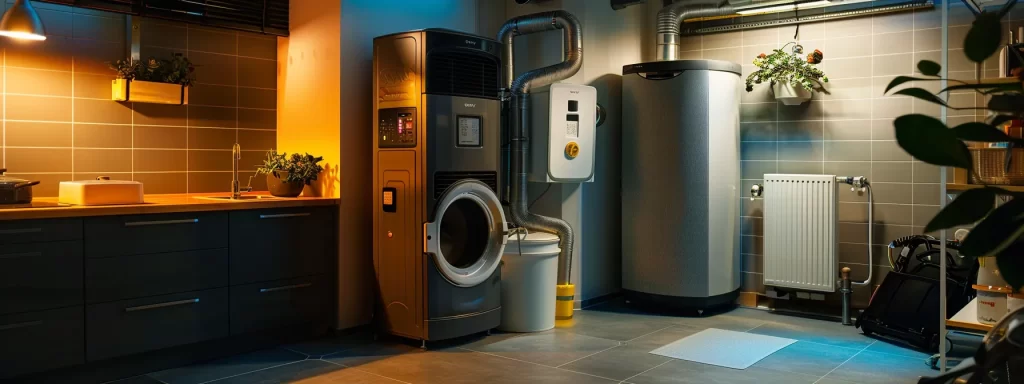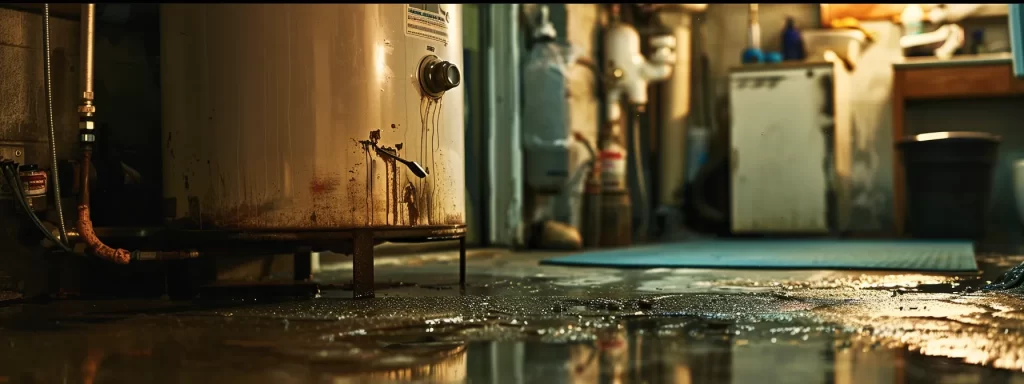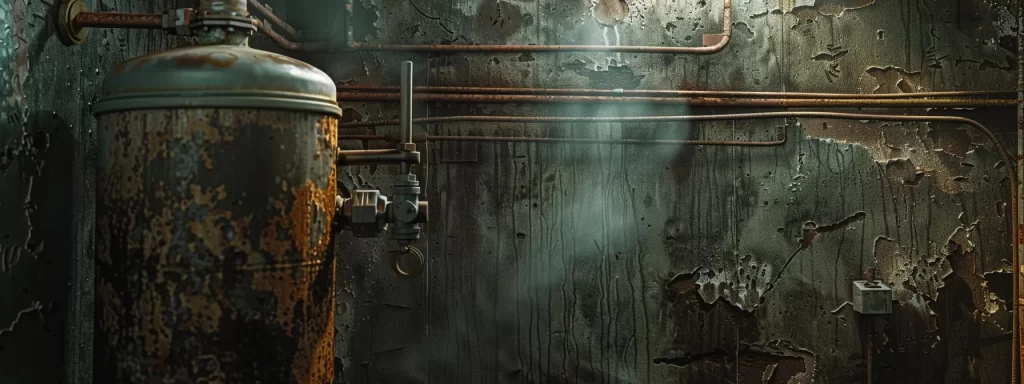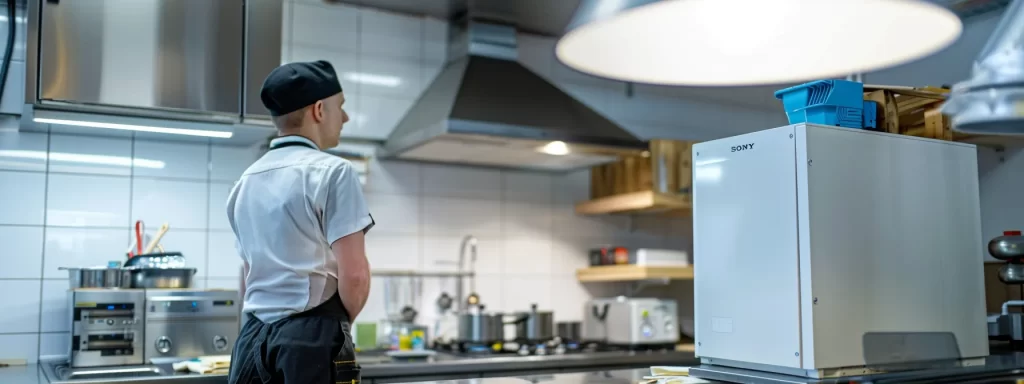Essential Signs Indicating Water Heater Replacement

Water Heater Replacement: Key Signs You Need It
Is your water heater acting up? Understanding when to replace your water heater can save you from sudden cold showers and costly repairs. In this post, readers will learn key signs indicating a water heaterreplacement is necessary, such as spotting leaks, changes in water quality, and unusual sounds coming from the unit. By identifying these issues early, homeowners can avoid more significant problems and ensure a steady supply of hot water. This guide will help readers recognize the signs and make informed decisions regarding their water heaterreplacement.
Essential Signs for Water Heater Replacement: Key Takeaways
- Traditional tank water heaters last 10 to 15 years; tankless models can last over 20 years
- Regular maintenance identifies issues early, prolonging the lifespan of your water heater
- Signs of corrosion or leaks indicate the need for prompt professional assessment and potential replacement
- Energy-efficient modern water heaters can significantly reduce utility bills and provide long-term savings
- Choosing the right size and type of water heater is essential for optimal performance and household needs
Understand Your Water Heater's Lifespan

Water heaters typically have different lifespans based on their type, with traditional tank models lasting about 10 to 15 years and tankless models extending to 20 years or more. Factors such as heating element functionality, pressure levels, and fuel type, like propane, play crucial roles in longevity. Identifying the manufacturer date can clarify a unit’s age, an essential consideration since age is often a leading indicator of potential water heater failure. Understanding these aspects is vital for informed home improvement decisions.
Typical Age Ranges for Tank and Tankless Models
The typical age ranges for tank and tankless water heaters can vary significantly. Traditional tank models usually last between 10 to 15 years, while tankless versions can extend their lifespan to 20 years or more, depending on factors like maintenance and water quality. Homeowners should regularly inspect their water heaters for signs of aging, such as water leaking or issues related to the check valve, to avoid unexpected failures, especially with systems that use natural gas or have a pilot light that may need attention over time.
Factors Affecting Water Heater Longevity
Several factors significantly impact the longevity of a water heater, influencing performance and reliability. Regular water heater troubleshooting can help identify issues with the thermostat or valve, which may affect heating efficiency and lead to more frequent repairs. Additionally, the quality of water in sinks, including mineral content, can contribute to scale buildup, shortening the lifespan of the unit and leading to costly replacements if not addressed promptly.
How to Find the Manufacturer Date on Your Unit
To locate the manufacturer date on your water heater, start by examining the owner’s manual or the label on the unit itself, which often includes a serial number. Typically, this number contains information about the year and month of manufacture, helping homeowners determine if soon-to-be-replaced parts, such as the relief valve or heating elements, need attention. Regular troubleshooting of wires and pipes connected to the water heater can also offer insights into potential age-related issues, emphasizing the importance of knowing when a replacement may be necessary.
Why Age Is a Primary Replacement Indicator
The age of a water heater serves as a primary replacement indicator due to its influence on efficiency and performance. As heaters age, the accumulation of sediment can lead to corrosion, impacting the tank‘s integrity and ultimately the water supply quality. Additionally, older units may struggle to maintain consistent temperatures, which could indicate that the pump is failing and in need of replacement to ensure reliable hot water access.
- Water heaters typically last 10 to 15 years for tank models and up to 20 for tankless.
- Age affects efficiency, often leading to increased energy costs and inconsistent temperatures.
- Accumulation of sediment in older units can lead to corrosion and water quality issues.
- Regular maintenance can prolong the life of your heater and identify issues early.
Spotting Physical Damage and Leaks Near Your Unit

Identifying puddles around the base of a gas or electric water heater is crucial for spotting leaks. Homeowners should also check connections and valves for any slow drips and recognize signs of corrosion on the tank or pipes. Addressing water heater leaks promptly can prevent further damage and costly repairs. Immediate action upon discovering a leak is essential to ensure safety and protect the home’s plumbing system.
Identifying Puddles Around the Base
Identifying puddles around the base of a hot water heater is a crucial step in determining whether repairs or replacement are necessary. These puddles may indicate a leak, which can lead to more significant water heater issues if not addressed promptly. Homeowners should regularly check for any signs of moisture accumulation and ensure that the drain and connections are intact, as these factors are essential for maintaining the unit’s efficiency and safety.
- Check for any puddles around the base of your water heater.
- Inspect connections and valves for slow drips.
- Look for signs of corrosion on the tank or pipes.
- Act quickly if leaks are spotted to prevent further damage.
Checking Connections and Valves for Slow Drips
Checking connections and valves on a water heater for slow drips is a vital maintenance step that can prevent larger, costlier issues down the line. Homeowners should frequently inspect these areas for any signs of leaking, as even a small drip can indicate a failing connection or valve that may require immediate attention or replacement. Timely identification of these issues not only aids in maintaining the water heater‘s efficiency but also helps avoid potential damage to the surrounding plumbing and property.
Recognizing Corrosion Signs on the Tank or Pipes
Recognizing signs of corrosion on the tank or pipes is vital for maintaining a reliable water heater. Homeowners should regularly inspect the unit for rust spots, flaking paint, or a greenish buildup, which typically indicate that the metal is deteriorating. Addressing these corrosion signs promptly can prevent leaks and costly damage, underscoring the importance of regular maintenance in extending the life of the water heater:
| Corrosion Signs | What to Look For | Action Needed |
|---|---|---|
| Rust Spots | Red or brown patches on the tank surface | Consider replacement or repair |
| Flaking Paint | Peeling or bubbling paint on the tank | Inspect for leaks; repair may be necessary |
| Greenish Buildup | Copper corrosion around pipes | Evaluate pipe condition; replacement may be needed |
Addressing Water Heater Leaks Promptly
Addressing water heater leaks promptly is critical to prevent further damage and ensure the safety of the home. Homeowners should immediately turn off the water supply and electrical or gas supply when a leak is detected to minimize potential hazards. A knowledgeable plumber can then assess the situation, determine the cause of the leak, and recommend whether a repair or water heaterreplacement is necessary, helping maintain peak efficiency and performance in the plumbing system.
Immediate Actions Upon Discovering a Leak
Upon discovering a leak in a water heater, immediate action is crucial to prevent further damage. Homeowners should first turn off the water supply to minimize flooding risks, followed by shutting down the electrical or gas supply to ensure safety. It is recommended to contact a professional plumber who can accurately diagnose the situation, assess the extent of the damage, and advise on whether repair or replacement of the unit is necessary, ensuring the home’s plumbing system remains functional.
Noticing Changes in Water Quality or Temperature

When homeowners notice changes in water quality or temperature, it could indicate the need for a water heaterreplacement. Insufficient hot water supply, rusty or discolored water, or metallic smells are critical warning signs. Cloudy water can point to sediment buildup, while sudden temperature fluctuations suggest underlying issues. Addressing these symptoms promptly ensures a reliable hot water supply and optimal home comfort.
Coping With Insufficient Hot Water Supply
Experiencing an insufficient hot water supply can be frustrating and indicative of potential issues with the water heater. For instance, if the hot water runs out quickly or is inconsistent in temperature, it may signal sediment buildup or failing components within the unit. Homeowners experiencing this issue should consider consulting a professional plumber to assess the situation and determine if replacement is necessary to ensure a consistent supply of hot water for daily needs.
What Rusty or Discolored Hot Water Signifies
Rusty or discolored hot water typically indicates corrosion inside the water heater, which can stem from sediment buildup or deterioration of the tank. This discoloration can affect water quality and may lead to a breakdown of the system, prompting the need for replacement. Homeowners experiencing this issue should consult a professional plumber to evaluate the water heater‘s condition and determine if immediate action is necessary to restore clean and safe water supply.
Detecting Metallic Smells or Tastes in Hot Water
Detecting metallic smells or tastes in hot water can indicate corrosion inside the water heater, which often results from sediment buildup or deterioration of the tank. This issue not only compromises water quality but may also signal that the unit is approaching the end of its functional life. Homeowners experiencing these troubling signs should consider consulting a professional plumber to evaluate their water heater and determine if a replacement is necessary to restore safe and clean hot water for daily use.
Cloudy Water Appearance and Sediment Buildup Problems
Cloudy water and sediment buildup in a water heater are significant indicators of underlying problems that may necessitate replacement. When homeowners observe cloudy water, it often signals accumulated minerals and debris within the tank, affecting both water quality and heater performance. Taking timely action to address these issues—by consulting a professional plumber—can prevent further damage and ensure a consistent supply of clean, hot water for daily activities.
Reasons for Sudden Hot Water Temperature Fluctuations
Sudden temperature fluctuations in hot water can often result from issues such as sediment buildup in the tank, malfunctioning heating elements, or problems with the thermostat. For example, when sediment accumulates, it can hinder heating efficiency, causing water to heat unevenly or not at all. Homeowners experiencing these temperature changes should consult a professional plumber urgently to determine the cause and avoid further complications:
- Check for sediment accumulation affecting heating efficiency.
- Inspect heating elements for proper functionality.
- Assess thermostat operation to ensure accurate temperature control.
Listening for Unusual Water Heater Sounds

Unusual sounds from a water heater can signal underlying issues that may require replacement. Rumbling or popping noises from the tank often indicate sediment buildup, while high-pitched whining sounds can suggest problems with heating elements. Banging or knocking noises during operation should not be ignored, as they may point to serious operational concerns. Understanding these sounds is crucial for determining when immediate action is necessary.
Recognizing how sediment accumulation leads to noisy operation can help prevent further damage. Homeowners need to know when strange noises signal an urgent need for replacement to maintain the efficiency and safety of their water heating system.
Deciphering Rumbling or Popping Noises From the Tank
Rumbling or popping noises coming from a water heater often indicate sediment buildup within the tank. As minerals accumulate at the bottom, the heat from the elements can cause these deposits to bubble, leading to disruptive sounds that signal a potential issue. Homeowners experiencing such noises should consider consulting a professional plumber to assess whether this buildup is compromising the unit’s efficiency and if a replacement is necessary.
| Sound Type | Possible Cause | Action Needed |
|---|---|---|
| Rumbling | Sediment buildup | Consult a plumber; possible replacement needed |
| Popping | Mineral deposits heating | Evaluate unit; may indicate need for replacement |
What High-Pitched Whining Sounds Indicate
High-pitched whining sounds from a water heater may indicate issues with the heating elements or problems with the internal components. These sounds could suggest that the elements are malfunctioning or that there are vibrations caused by loose parts, impacting the unit’s efficiency. Homeowners experiencing this issue should consult a professional plumber to investigate the cause and determine if repairs or a replacement is necessary to ensure consistent hot water supply.
| Sound Type | Possible Cause | Action Needed |
|---|---|---|
| High-Pitched Whining | Malfunctioning heating elements | Consult a plumber; assess for repairs |
Understanding Banging or Knocking Sounds During Operation
Banging or knocking sounds from a water heater often indicate sediment buildup inside the tank. This buildup can interfere with the normal operation of the heating elements, leading to pressure changes and resulting in disruptive noises. Homeowners should address these sounds promptly, as they can signal a need for professional assessment and potentially a water heaterreplacement to prevent further damage and ensure efficient operation.
How Sediment Accumulation Causes Noisy Operation
Sediment accumulation in a water heater can lead to noisy operation, often resulting in rumbling or popping sounds. This buildup occurs as minerals found in hard water settle at the bottom of the tank, where heat can cause them to bubble. Homeowners experiencing such noises should recognize that this indicates a potential problem, possibly signaling the need for professional assessment or even replacement to maintain efficient performance and ensure consistent hot water supply.
When Strange Noises Signal an Urgent Need for Replacement
Strange noises coming from a water heater can be a clear indicator that replacement is imminent. For instance, persistent rumbling or popping noises often signal significant sediment buildup, which can hinder the heating process and compromise the unit’s efficiency. Homeowners experiencing these unusual sounds should not ignore them, as they may point to urgent issues that require professional attention to prevent further damage and ensure consistent hot water access:
- Rumbling noises may indicate sediment buildup affecting heating efficiency.
- Popping sounds can be a result of mineral deposits heating up within the tank.
- High-pitched whining may suggest malfunctioning heating elements.
- Banging or knocking sounds could indicate pressure changes due to sediment interference.
Weighing Repair Costs Against Full Replacement Value

Calculating the expense of recurring repairs is essential in determining whether replacing a broken water heater makes more financial sense. This section will discuss energy savings from a modern unit, as well as obtaining estimates for both repair and replacement options. Evaluating the long-term benefits of a new water heater will help homeowners make informed decisions about their plumbing systems.
Calculating the Expense of Recurring Repairs
When evaluating whether to repair or replace a water heater, homeowners should carefully calculate the total expense of ongoing repairs. Frequent service calls for issues like inconsistent temperatures or leaks can add up quickly, often making replacement a more economical choice in the long run. For example, if repair costs approach or exceed half the price of a new water heater, considering a new installation may be a more financially sound decision that ensures reliable hot water service while avoiding future disruptions.
Determining When Replacing a Broken Water Heater Is Smarter Financially
When assessing whether to replace a broken water heater, homeowners should consider the overall costs of frequent repairs compared to the price of a new unit. If repair expenses begin to approach half of the cost of a replacement, opting for a new water heater is often the more economical choice. In many cases, a modern water heater not only offers improved efficiency but also reduces energy bills, providing long-term savings that make the initial investment worthwhile.
| Scenario | Estimated Repair Costs | Replacement Cost | Recommended Action |
|---|---|---|---|
| Minor Repairs (less than 25% replacement cost) | Under $500 | $2,000 | Repair the unit |
| Moderate Repairs (25% – 50% replacement cost) | $500 – $1,000 | $2,000 | Consider replacement |
| Major Repairs (over 50% replacement cost) | Over $1,000 | $2,000 | Replace the unit |
Considering Energy Savings From a Modern Unit
Investing in a modern water heater can lead to significant energy savings, making it a prudent choice for homeowners facing ongoing repair costs. Newer models are designed to operate more efficiently, utilizing advanced technology that reduces energy consumption and lowers utility bills. For instance, whether opting for a tankless water heater or a high-efficiency tank model, homeowners may notice substantial savings on their energy expenditures, justifying the initial investment and contributing to long-term financial benefits.
| Type of Water Heater | Estimated Annual Energy Savings | Additional Benefits |
|---|---|---|
| Tankless | Up to 30% savings | Endless hot water supply |
| High-Efficiency Tank | 10-20% savings | Reduced standby heat loss |
| Traditional Tank | Minimal savings | Lower initial cost |
Obtaining Estimates for Both Repair and Replacement Options
Obtaining estimates for both repair and replacement options is essential for homeowners facing water heater issues. By consulting with experienced plumbers, homeowners can receive accurate assessments of their current water heater‘s condition and understand the costs associated with repairs versus purchasing a new unit. This process not only clarifies the financial implications but also ensures that any decision made will provide long-term reliability and efficiency in their plumbing system, ultimately optimizing the hot water supply for their needs.
Evaluating Long-Term Benefits of a New Water Heater
Investing in a new water heater can offer significant long-term benefits that often outweigh the costs of frequent repairs. Modern water heaters are designed with advanced technology, providing greater energy efficiency and lower utility bills. For instance, homeowners may experience substantial savings on energy costs with a high-efficiency tank or a tankless model, ensuring a reliable hot water supply while minimizing expenses over time.
Preparing for Your Water Heater Replacement Task

Choosing the right type and size of water heater is essential for a household’s needs. Homeowners should also understand installation requirements, associated costs, and how to find qualified technicians for the job. Proper disposal of the old unit is important too, along with knowing what to expect during installation day. Each of these factors plays a significant role in ensuring a smooth water heaterreplacement process.
Selecting the Appropriate Type and Size for Your Household
Choosing the right type and size of water heater for a household is essential to meet daily hot water needs efficiently. Homeowners should consider factors such as the number of occupants, peak usage times, and the type of fuel available, as these elements affect the choice between tank and tankless models. For example, families with high hot water demand may find a tankless heater beneficial, while smaller households might suffice with a traditional tank unit.
| Household Size | Recommended Type | Size/Capacity |
|---|---|---|
| 1-2 People | Tankless | Up to 5 GPM |
| 3-4 People | Traditional Tank | 30-40 gallons |
| 5+ People | High-Efficiency Tank | 50+ gallons |
Understanding Installation Needs and Associated Costs
Understanding installation needs and associated costs is crucial for homeowners planning a water heaterreplacement. Factors such as the type of water heater—be it tank or tankless—and the complexities of local plumbing codes can significantly impact installation expenses. Homeowners should budget for both the price of the unit and labor costs, which may vary depending on the specific requirements of the installation process, such as venting or electrical upgrades:
| Installation Factor | Estimated Cost |
|---|---|
| Standard Tank Water Heater Installation | $300 – $600 |
| Tankless Water Heater Installation | $800 – $1,500 |
| Venting and Electrical Upgrades | $100 – $500 |
Finding Qualified Technicians for Replacing a Broken Water Heater
Finding qualified technicians for replacing a broken water heater is essential to ensure proper installation and optimal performance. Homeowners should prioritize technicians with the appropriate licensing and certifications, as these indicators reflect a professional’s knowledge and adherence to safety standards. Additionally, seeking recommendations from friends or checking online reviews can help identify trustworthy professionals, ultimately leading to a successful water heaterreplacement that meets the household’s needs.
Arranging Proper Disposal of Your Old Water Heater
Arranging proper disposal of an old water heater is crucial for safety and environmental compliance. Homeowners should check with local waste management authorities for guidelines on disposing of appliances, as many areas offer recycling programs for metal components. Engaging a qualified plumber during the replacement process can ensure that the old unit is handled professionally, preventing potential hazards and contributing to responsible waste management practices.
What to Anticipate During the Installation Day
On installation day, homeowners should expect the process to begin with a thorough assessment of the existing plumbing and the new water heater installation site. The technician will typically arrive on time, equipped with the necessary tools and the new unit, ready to remove the old appliance and connect the new system. Homeowners might want to keep the area clear and accessible, allowing for efficient service and minimizing disruptions during the replacement process.
Conclusion
Recognizing the key signs that indicate a need for water heaterreplacement is essential for maintaining a reliable hot water supply in homes and businesses. Homeowners should remain vigilant for symptoms such as leaks, discolored water, and unusual noises, which can signal potential failures. Timely action can prevent costly repairs and enhance overall system efficiency. By understanding these indicators, individuals can make informed decisions that ultimately improve their plumbing systems and ensure long-term comfort.